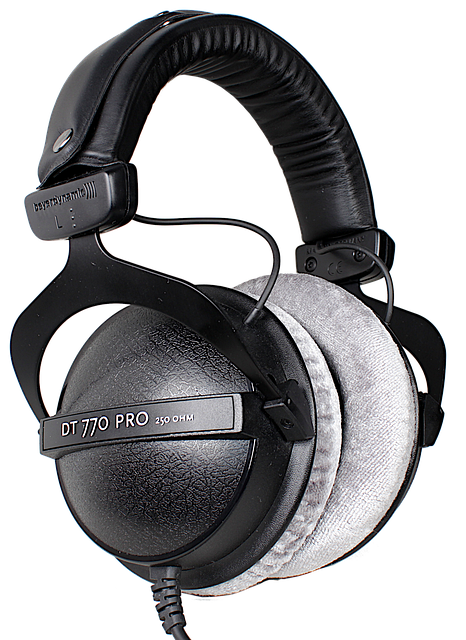aptX HD vs aptX : Does It Matter for Bluetooth Headphones?
Table of Contents
There’s only one thing wireless headphones users wanted. A clearer, low-latency audio that goes along with the headphone’s mobility. Headphone manufacturers are keeping up with the demands by incorporating low-latency Bluetooth codecs such as aptX and its successor, aptX HD.
For most users, aptX and aptX HD means they’re finally getting clearer audio over a Bluetooth headphone. But how much of such an assumption is true? Also, what makes aptX HD different from its predecessor aptX?
More importantly, should you ditch your wireless headphone for a new aptX HD headphone, knowing the one doesn’t come cheap?
I’ll explain what aptX HD and aptX are and how they compare to each other. Then, it’s up to you to make the best decision.
What is aptX?
It’s hard to explain aptX without touching a little about codec. In simple words, codec is a method to sample, compress and transfer audio data over Bluetooth. Codec is needed because Bluetooth isn’t meant to stream a high volume of data at high speed.
Bluetooth is pretty limited in terms of bandwidth. Originally, it was meant for devices that send a very little amount of data, such as mouses. Then, the first generation Bluetooth headphone kicks in, armed with the primitive low complexity sub-band codec or SBC.
SBC does a satisfactory job to send audio data over the Bluetooth connection, but it wasn’t optimized for speed nor quality. Qualcomm, a semiconductor that produces chips for various smartphones, came up with a game-changing codec called aptX.
aptX is more intelligent than SBC as it uses psychoacoustic modeling to sample the audio data. It is able to determine which portion of the audio data can be discarded without affecting the audio integrity.
The result? aptX consumes lesser bandwidth than SBC and that aptX can transfer higher resolution audio.
Qualcomm’s technical spec for aptX is given as:
Sound quality:
- THD+N@1kHz: -67dB
- SNR@1kHz: 93dB
- PEAQ audio quality:-0.18
Audio Encoding
- 16-bit, up to 48kHz sampling rate
Bit Rate
- 384 kbps (48 kHz sampling)
With its rated specification, aptX codec can produce CD-like quality audio on a headphone. CD-quality audio has a sampling rate of 41.1 kHz and 16-bit depth encoding. The aptX’s 16 bit/48 kHz resolution is more than enough to handle CD-quality transmissions at 384 kbps.
What Is aptX HD
aptX HD is Qualcomm’s answer to audiophiles who wanted hi-res audio on their Bluetooth headphone. It is, as what’s quoted on Qualcomm’s website, ‘indistinguishable from high-resolution audio’.
The aptX HD is a remarkable improvement from its predecessor, particularly in terms of the size of audio data it can sample at any one time.
Here’s aptX HD’s spec at a glance:
Sound quality
- THD+N@1kHz: -80dB
- SNR@1kHz: 129dB
- PEAQ audio quality: -0.05
Audio Encoding
- 24-bit, up to 48kHz sampling rate
Bit Rate
- 576 kbps (48 kHz sampling)
aptX HD is capable of encoding 24 bits of audio data at 48 kHz. The 50% increased in bit-depth means there are fewer losses when transmitting audio over Bluetooth. High-res audio file has a 24 bit/ 96 kHz resolution. aptX HD is as close as you get to streaming real HD audio over Bluetooth.
Another improvement with the aptX HD is its high bit rate of 576 kbps. It means that the aptX HD codec has a much higher bandwidth than aptX. Theoretically, headphones with aptX HD should no longer suffer from latency issues, which can be very annoying when streaming videos.
aptX HD vs aptX – Sound quality
aptX HD is faster and takes in more information than aptX. But that’s not the only advantage of the former.
The 3 parameters, THD+N, SNR, and PEAQ show that aptX HD has the better edge in the sound quality department.
THD+N is a measurement of distortion on the audio signal and a larger value indicates lesser distortion.
SNR stands for signal-noise ratio. It measures the amount of noise introduced to the transmission by the electronic circuit. A larger value means the noise is less noticeable.
PEAQ is an industry-standard algorithm used in measuring audio quality in an objective manner. Both aptX HD and aptX have a PEAQ ODG score of -0.05 and -0.18 respectively. A value that’s closer to 0 is perceived to have better audio quality.
Does Getting An aptX HD or aptX Headphone Make A Difference?
It depends.
If you’re getting an aptX HD or aptX headphone but you’re using a device that doesn’t support the codec, you won’t get the high-fidelity audio promised. You’ll need to use smartphones like ZTX A31 or Nokia X20, which are equipped with an aptX HD-enabled audio encoder.
Both aptX and aptX HD may mean little if you’re listening to a low-fidelity audio source like an MP3 file. In such cases, getting an aptX HD headphone is overkill. You’ll only reap the benefit of aptX HD when you’re streaming high-res music from sites like Tidal.
The codecs are enabled by an audio processing chip and it’s only part of the equation for a headphone’s performance. The mechanical design of the headphone, driver design, and other factors weigh in on the listening experience.
Bottom Line
Both aptX HD and aptX take you closer to a flawless audio experience. However, it takes two to tango. Ensure that your audio source is capable of supporting the codec before buying a headphone that comes with it.


